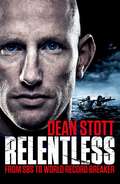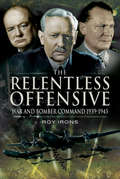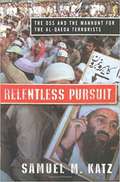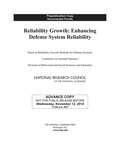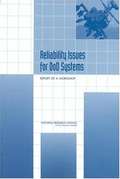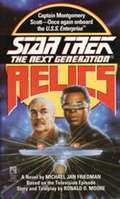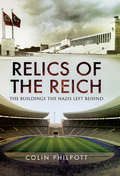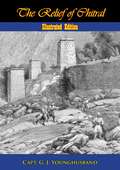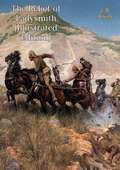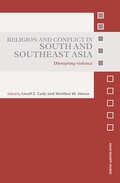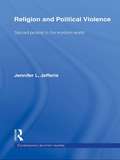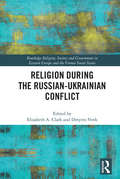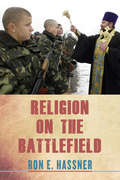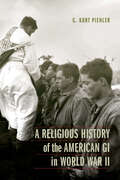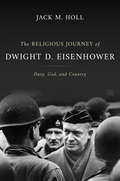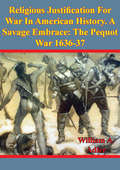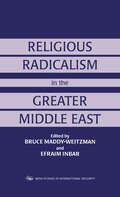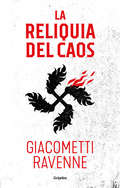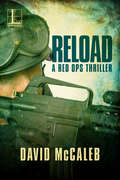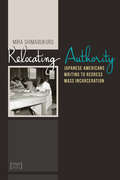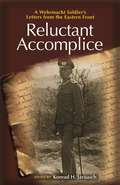- Table View
- List View
Relentless
by Dean Stott'Dean's journey from the Special Boat Service to intrepid adventurer is truly inspirational.' - Sir Ranulph Fiennes'An extraordinary tale of courage and adventure. Dean's story is inspirational.' - Levison Wood'Dean's relentless determination to help those who face many mental health battles is incredible and admirable - he's a hero to many.' - Bear GryllsFor readers of Ant Middleton, Jason Fox, Brian Wood, Bear Grylls and Billy Billingham comes the extraordinary, inspirational story of Special Boat Service soldier and adventurer Dean Stott.Everybody has heard the SAS motto that who dares wins, but special forces warrior Dean Stott also lives his life by another powerful mantra - that of the relentless pursuit of excellence. In 16 years of service, Dean rose to the top of Britain's fighting force, taking part of some of the most daring and dangerous operations in the war on terror, and then in the private security force, where missions included him singlehandedly evacuating the Canadian Embassy in Libya.But then, following a horrific parachuting accident, Dean's dream career was cut short, and his ethos was put to its toughest test. Just like the day when Dean's dad said that he could never make it as a soldier, Dean's doctors told him that he would never again perform at the elite level.To put it mildly, Dean disagreed, but even those that knew him were staggered by the mission that he set himself - the man who didn't own a bike would cycle the Pan American Highway, a 14,000 mile route that stretches from Argentina to Alaska, passing through some of the most dangerous countries in the world. A passionate mental health campaigner, Dean decided to up the stakes further by setting himself the task of raising a million pounds for charity. With two world records also in his sights, the stage was set for Dean to rediscover the tenacity, bravery, and downright doggedness that saw him rise to the top of the Special Forces. The final curveball arrived in the shape of a wedding invitation from his old friend Prince Harry - would he make it back in time for the royal wedding, or at all? Dean Stott is Relentless, and this is his story.
Relentless
by Dean Stott'Dean's journey from the Special Boat Service to intrepid adventurer is truly inspirational.' - Sir Ranulph Fiennes'An extraordinary tale of courage and adventure. Dean's story is inspirational.' - Levison Wood'Dean's relentless determination to help those who face many mental health battles is incredible and admirable - he's a hero to many.' - Bear GryllsFor readers of Ant Middleton, Jason Fox, Brian Wood, Bear Grylls and Billy Billingham comes the extraordinary, inspirational story of Special Boat Service soldier and adventurer Dean Stott.Everybody has heard the SAS motto that who dares wins, but special forces warrior Dean Stott also lives his life by another powerful mantra - that of the relentless pursuit of excellence. In 16 years of service, Dean rose to the top of Britain's fighting force, taking part of some of the most daring and dangerous operations in the war on terror, and then in the private security force, where missions included him singlehandedly evacuating the Canadian Embassy in Libya.But then, following a horrific parachuting accident, Dean's dream career was cut short, and his ethos was put to its toughest test. Just like the day when Dean's dad said that he could never make it as a soldier, Dean's doctors told him that he would never again perform at the elite level.To put it mildly, Dean disagreed, but even those that knew him were staggered by the mission that he set himself - the man who didn't own a bike would cycle the Pan American Highway, a 14,000 mile route that stretches from Argentina to Alaska, passing through some of the most dangerous countries in the world. A passionate mental health campaigner, Dean decided to up the stakes further by setting himself the task of raising a million pounds for charity. With two world records also in his sights, the stage was set for Dean to rediscover the tenacity, bravery, and downright doggedness that saw him rise to the top of the Special Forces. The final curveball arrived in the shape of a wedding invitation from his old friend Prince Harry - would he make it back in time for the royal wedding, or at all? Dean Stott is Relentless, and this is his story.
Relentless
by Dean StottFor readers of Ant Middleton, Jason Fox, and SAS: Who Dares Wins, comes the extraordinary story of Special Forces soldier Dean Stott.Everybody has heard the SAS motto that who dares wins, but special forces warrior Dean Stott also lives his life by another powerful mantra - that of the relentless pursuit of excellence. In 16 years of service, Dean rose to the top of Britain's fighting force, taking part of some of the most daring and dangerous operations in the war on terror.But then, following a horrific parachuting accident, Dean's dream career was cut short, and his ethos was put to its toughest test. Just like the day when Dean's dad said that he could never make it as a soldier, Dean's doctors told him that he would never again perform at the elite level.To put it mildly, Dean disagreed, but even those that knew him were staggered by the mission that he set himself - the man who didn't own a bike would cycle the Pan American Highway, a 14,000 mile route that stretches from Argentina to Alaska, passing through some of the most dangerous countries in the world. A passionate mental health campaigner, Dean decided to up the stakes further by setting himself the task of raising a million pounds for charity. With two world records also in his sights, the stage was set for Dean to rediscover the tenacity, bravery, and downright doggedness that saw him rise to the top of the Special Forces. The final curveball arrived in the shape of a wedding invitation from his old friend Prince Harry - would he make it back in time for the royal wedding, or at all? Dean Stott is Relentless, and this is his story.(P) 2019 Headline Publishing Ltd
Relentless Offensive: War and Bomber Command, 1939–1945
by Roy IronsDuring the years before World War II, the Royal Air Force, created amid the bloodshed of the Great War, saw salvation in the doctrine of a relentless offensive by a bomber force which would sail over trenches and then on to the enemy cities and annihilate the ability of the enemy to wage war. This book gives a view of how that doctrine, driven by courage and coldly sharpened by scientists, brought those visions to reality. This is a fresh analysis of Bomber Command, its tactics and technology. It discusses exactly how well organised Bomber Command was to exploit the rapidly evolving new science and technology of new type of warfare. How much did the concept of Allied and German morale' influenced the Commands operational plans? What was the influence of the Research and Experiments Dept of the Ministry of Home Security and of university scientists such as Tizard and Cherwell? This book delves into the research into high-explosives and firebombing techniques, newly designed bombs and their devastating effect on the enemy. Why in the early war days was the RAF bombers armament so ineffective, the navigation so imprecise and the bombing accuracy so poor? This book also discusses the many varying moral issues that even to this day still rage between those who feel guilt for the destruction of so many German cities and those who see moral justification in the eventual Allied victory.
Relentless Pursuit: The DSS And The Manhunt For The Bin Laden Terrorists
by Samuel M. KatzIt was on February 6, 1993, that the United States was first attacked on its own soil by foreign terrorists. A zealous band of Middle Easterners, holy warriors determined to punish the U.S. for its supposed transgressions against Islam, packed over a ton of home made explosives into the back of a rented van. They drove their bomb across the Hudson from New Jersey, maneuvered it through downtown traffic and parked it in the underground garage at the Vista Hotel, beneath the twin towers of the World Trade Center. They lit a long fuse, which allowed them time to get back to New Jersey to watch the results of the explosion on CNN. They hoped to topple one mammoth tower into the other and kill ten thousand people or more. Miraculously, only six people were killed. <p><p> Most of the group were captured within a week, but the mastermind behind the attack, Ramzi Ahmed Yousef, had immediately gone to JFK airport to fly to Pakistan. Before leaving, he phoned the Associated Press and claimed responsibility for the bombing in the name of the Arab Liberation Army, a terrorist group led by Saudi exile Osama bin Laden. <p> A succession of such brazen crimes has revealed complex connections among terrorist groups with an implacable hostility toward Western civilization. Outrages such as the assassination of the Jewish Defense League founder Meier Kahane, a huge plot in the Philippines to plant bombs on intercontinental airlines and to assassinate the Pope, the bombing of U.S. embassies, culminating in the African embassy bombings of 1998, the attack on the USS Cole in 1999, and the devastating attack on the World Trade Center in 2001 have made it clear that a worldwide network of terrorists led by Osama bin Laden is making war on the United States. <p> On the front lines combating these terrorists in 150 countries around the world have been the 1,200 agents of the U.S. Department of State's Diplomatic Security Service. A little-known but highly effective branch of the government, the DSS is the one arm of federal law enforcement with international powers of arrest. These agents maintain close ties to local police commanders in many countries and can entice informants with bounties of up to $4,000,000. After a challenging international search, it was DSS agents in Pakistan who captured Ramzi Yousef. DSS agents have been in the vanguard of the War on Terrorism long before it was declared. <p> In Relentless Pursuit, Samuel Katz review the escalating series of terrorist attacks on the U.S. during the last decade, including those in many foreign countries and finally in New York and Washington. In the process, he tells the gripping story of the DSS and its agents protecting us and our representatives here and abroad. Katz's detailed, personal, on-the-ground anecdotes bring home the contexts and linkages of the War on Terrorism that has been fought on our behalf by the DSS since the 1980s. Relentless Pursuit is a stirring tribute to an unsung group of brave Americans.
Reliability Growth: Enhancing Defense System Reliability
by Panel on Reliability Growth Methods for Defense SystemsA high percentage of defense systems fail to meet their reliability requirements. This is a serious problem for the U. S. Department of Defense (DOD), as well as the nation. Those systems are not only less likely to successfully carry out their intended missions, but they also could endanger the lives of the operators. Furthermore, reliability failures discovered after deployment can result in costly and strategic delays and the need for expensive redesign, which often limits the tactical situations in which the system can be used. Finally, systems that fail to meet their reliability requirements are much more likely to need additional scheduled and unscheduled maintenance and to need more spare parts and possibly replacement systems, all of which can substantially increase the life-cycle costs of a system. Beginning in 2008, DOD undertook a concerted effort to raise the priority of reliability through greater use of design for reliability techniques, reliability growth testing, and formal reliability growth modeling, by both the contractors and DOD units. To this end, handbooks, guidances, and formal memoranda were revised or newly issued to reduce the frequency of reliability deficiencies for defense systems in operational testing and the effects of those deficiencies. "Reliability Growth" evaluates these recent changes and, more generally, assesses how current DOD principles and practices could be modified to increase the likelihood that defense systems will satisfy their reliability requirements. This report examines changes to the reliability requirements for proposed systems; defines modern design and testing for reliability; discusses the contractor's role in reliability testing; and summarizes the current state of formal reliability growth modeling. The recommendations of "Reliability Growth" will improve the reliability of defense systems and protect the health of the valuable personnel who operate them.
Reliability Issues for DoD Systems: REPORT OF A WORKSHOP
by Committee on National StatisticsA report on Reliability Issues for DoD Systems
Reliability Issues for DoD Systems: REPORT OF A WORKSHOP
by National Research Council of the National AcademiesThe final report of the National Research Council's (NRC) Panel on Statistical Methods for Testing and Evaluating Defense Systems (National Research Council, 1998) was intended to provide broad advice to the U.S. Department of Defense (DoD) on current statistical methods and principles that could be applied to the developmental and operational testing and evaluation of defense systems. To that end, the report contained chapters on the use of testing as a tool of system development; current methods of experimental design; evaluation methods; methods for testing and assessing reliability, availability, and maintainability; software development and testing; and validation of modeling and simulation for use in operational test and evaluation. While the examination of such a wide variety of topics was useful in helping DoD understand the breadth of problems for which statistical methods could be applied and providing direction as to how the methods currently used could be improved, there was, quite naturally, a lack of detail in each area. To address the need for further detail, two DoD agencies-the Office of the Director of Operational Test and Evaluation and the Office of the Under Secretary of Defense for Acquisition, Technology, and Logistics-asked the NRC's Committee on National Statistics to initiate a series of workshops on statistical issues relevant to defense acquisition. The aim of each workshop is to inform DoD about the methods that represent the statistical state of the art and, through interactions of the statistical and defense communities, explore their relevance for DoD application.
Relics
by Michael Jan FriedmanIn the tradition of UNIFICATION, here is the story that fans of the original STAR TREK series and STAR TREK: THE NEXT GENERATION have been clamoring for -- Montgomery Scott's return to the Star Trek universe and his encounter with the crew of the U.S.S. Enterprise NCC 1701-D. Missing in space for seventy-five years, Scotty manages to survive against incredible odds, only to be found by the crew of the Starship Enterprise . Though rescued, Scotty soon finds himself lost in a world that he barely recognizes, a world that has passed him by... But the adventure is not over for Captain Scott who must do the impossible when the new U.S.S. Enterprise faces a very old danger in a remote sector of space. This time, Captain Picard and his crew will need more than all of their courage and all of their skills to save the great Starship from destruction. This time, they will need a miracle worker.
Relics of the Reich: The Buildings the Nazis Left Behind
by Colin PhilpottRelics of the Reich is the story of what happened to the buildings the Nazis left behind. Hitlers Reich may have been defeated in 1945 but many buildings, military installations and other sites remained. At the end of the War, some were obliterated by the victorious Allies but others survived.For almost fifty years, these were left crumbling and ignored with postwar and divided Germany unsure what to do with them, often fearful that they might become shrines for neo-Nazis. Since the early 1990s, Germans have come to terms with these iconic sites and their uncomfortable part. Some sites are even listed buildings.Relics of the Reich visits many of the buildings and structures built or adapted by the Nazis and looks at what has happened since 1945 to try to discover what it tells us about Germanys attitude to Nazism now.It also acts as a commemoration of mankinds deliverance from a dark decade and serves as renewal of our commitment to ensure history does not repeat itself.
The Relief of Chitral [Illustrated Edition]
by Capt. G. J. Younghusband Capt. Sir Francis E. YounghusbandIncludes over 15 illustrations including detailed map of the area of operations.The Chitral Expedition was a military expedition in 1895 sent by the British authorities to relieve the fort at Chitral which was under siege after a local coup. After the death of the old ruler power changed hands several times. An intervening British force of about 400 men was besieged in the fort until it was relieved by two expeditions, a small one from Gilgit and a large one from Peshawar."To all who can enjoy military history this will be a fascinating book. It is written in conjunction by Captain F. E. Younghusband, formerly political officer at Chitral, and during the campaign correspondent of the Times, and his brother, Captain G. J. Younghusband, of the Guides who was with his regiment in General Low's force through the whole affair. Its information is therefore all firsthand, and as it is charmingly written, even the ordinary reader, while anathematising a few sentences of detail only interesting to soldiers, will find himself unable to lay it down. The cause of the war, the arrest of Captain Ross, the advance of General Low, Colonel Kelly's rush, the defence of Chitral, and the relief of Chitral, are all described with a lucid brevity and clearness which never fatigue. It was a wonderful little campaign; but to our minds the most interesting part of the book is the incidental proof it contains, that in spite of the success of Colonel Kelly's small force, the military authorities were in the right in their careful preparations."-The Spectator.
The Relief of Ladysmith [Illustrated Edition]
by J. B. AtkinsIncludes Boer War Illustrations Pack with 300 maps, plans, and photos.The Relief of Ladysmith is a detailed account of the siege of Ladysmith during the South African War (1899-1902) and the efforts to lift the siege and rescue the town's inhabitants. Atkins, a British officer who participated in the relief, provides a firsthand perspective on one of the most dramatic episodes of the war.—Print Ed.
Religion and Conflict in South and Southeast Asia: Disrupting Violence (Asian Security Studies)
by Linell E. Cady Sheldon W. SimonA major new contribution to comparative and multidisciplinary scholarship on the alignment of religion and violence in the contemporary world, with a special focus on South and Southeast Asia. Religion and Conflict in South and Southeast Asia shows how this region is the site of recent and emerging democracies, a high degree of religious pluralism, the largest Muslim populations in the world, and several well-organized terrorist groups, making understanding of the dynamics of religious conflict and violence particularly urgent. By bringing scholars from religious studies, political science, sociology, anthropology and international relations into conversation with each other, this volume brings much needed attention to the role of religion in fostering violence in the region and addresses strategies for its containment or resolution. The dearth of other literature on the intersection of religion, politics and violence in contemporary South and Southeast Asia makes the timing of this book particularly relevant. This book will of great interest to advanced undergraduate and postgraduate students of Asian politics, security studies and conflict studies.
Religion and Political Violence: Sacred Protest in the Modern World (Contemporary Terrorism Studies)
by Jennifer L. JefferisThis book uses the theory of social movements and first-hand interviews to create a new analysis of religiously motivated political violence in the modern world. Examining the movement to restore Sharia law to a dominant place in the Egyptian government, the movement to make abortion illegal in the United States, and the religious effort to secure territory in Israel, the author contends that religion becomes violent not because of ideology or political context alone, but because of the constantly evolving relationship between them. The ebb and flow of opportunities for political access ensures that secularization and religion, although polar opposites, depend on each other to define themselves. As a result, while their respective degrees of influence will inevitably undulate over time, both will remain a part of the political process for some time. Thus, a full understanding of both is critical to a meaningful understanding of the political process. Much work has been done to understand secular social movements as part of the political process, and consequentially researchers now know a great deal about the motivations, resources and timing of secular social movements. Considerably less research has been done in the field of religious social movements and this book fills that gap in the literature. This book will be of great interest to students of political violence, religion, sociology, and Politics and International Relations in general. Jennifer Jefferis is Assistant Professor in the Department of Government, Regent University, USA, and has a PhD in Political Science from Boston University.
Religion During the Russian Ukrainian Conflict (Routledge Religion, Society and Government in Eastern Europe and the Former Soviet States)
by Elizabeth A. Clark; Dmytro VovkThis book investigates how the military conflict between Russia and Ukraine has affected the religious situation in these countries. It considers threats to and violations of religious freedom, including those arising in annexed Crimea and in the eastern part of Ukraine, where fighting between Ukrainian government forces and separatist paramilitary groups backed and controlled by Russia is still going on, as well as in Russia and Ukraine more generally. It also assesses the impact of the conflict on church-state relations and national religion policy in each country and explores the role religion has played in the military conflict and the ideology surrounding it, focusing especially on the role of the Ukrainian and Russian Orthodox churches, as well as on the consequences for inter-church relations and dialogue.
Religion in the Military Worldwide
by Ron E. HassnerHow does religion affect the lives of professional soldiers? How does religion shape militaries, their organization, procedures, and performance? This volume is the first to address these questions by comparing religious symbols and practices in nine countries: Japan, Canada, the United Kingdom, Pakistan, Israel, Iran, India, the United States, and Turkey. The contributors explore how and why soldiers pray, the role of religious rituals prior to battle, the functions that chaplains perform, the effects of religion on recruitment and unit formation, and how militaries grapple with ensuing constitutional dilemmas.
Religion on the Battlefield
by Ron E. HassnerHow does religion shape the modern battlefield? Ron E. Hassner proposes that religion acts as a force multiplier, both enabling and constraining military operations. This is true not only for religiously radicalized fighters but also for professional soldiers. In the last century, religion has influenced modern militaries in the timing of attacks, the selection of targets for assault, the zeal with which units execute their mission, and the ability of individual soldiers to face the challenge of war. Religious ideas have not provided the reasons why conventional militaries fight, but religious practices have influenced their ability to do so effectively.In Religion on the Battlefield, Hassner focuses on the everyday practice of religion in a military context: the prayers, rituals, fasts, and feasts of the religious practitioners who make up the bulk of the adversaries in, bystanders to, and observers of armed conflicts. To show that religious practices have influenced battlefield decision making, Hassner draws most of his examples from major wars involving Western militaries. They include British soldiers in the trenches of World War I, U.S. pilots in World War II, and U.S. Marines in Iraq and Afghanistan. Hassner shows that even modern, rational, and bureaucratized military organizations have taken—and must take—religious practice into account in the conduct of war.
A Religious History of the American GI in World War II (Studies in War, Society, and the Military)
by G. Kurt PiehlerA Religious History of the American GI in World War II breaks new ground by recounting the armed forces&’ unprecedented efforts to meet the spiritual needs of the fifteen million men and women who served in World War II. For President Franklin D. Roosevelt and many GIs, religion remained a core American value that fortified their resolve in the fight against Axis tyranny. While combatants turned to fellow comrades for support, even more were sustained by prayer. GIs flocked to services, and when they mourned comrades lost in battle, chaplains offered solace and underscored the righteousness of their cause. This study is essential reading for anyone seeking to understand the social history of the American GI during World War II. Drawing on an extensive range of letters, diaries, oral histories, and memoirs, G. Kurt Piehler challenges the conventional wisdom that portrays the American GI as a nonideological warrior. American GIs echoed the views of FDR, who saw a Nazi victory as a threat to religious freedom and recognized the antisemitic character of the regime. Official policies promoted a civil religion that stressed equality between Protestantism, Roman Catholicism, and Judaism. Many chaplains embraced this tri-faith vision and strived to meet the spiritual needs of all servicepeople regardless of their own denomination. While examples of bigotry, sectarianism, and intolerance remained, the armed forces fostered the free exercise of religion that promoted a respect for the plurality of American religious life among GIs.
The Religious Journey of Dwight D. Eisenhower: Duty, God, and Country (Library of Religious Biography (LRB))
by Jack M. Holl&“Our form of government has no sense unless it is founded in a deeply felt religious faith, and I don&’t care what it is. With us, of course, it is the Judeo-Christian concept, but it must be a religion that all men are created equal.&” So said Dwight D. Eisenhower shortly after being elected president of the United States in 1952. Although this statement has been variously interpreted, it reflects one of his fundamental guiding principles: that for a country to thrive, it needs a shared identity, formed through common values, history, and purpose. For Eisenhower, this could be found most distinctly in shared faith—a concept that came to be known as American civil religion, which defined and drove much of the cohesion of the 1950s under Eisenhower&’s leadership. This biography tells the story of how deeply religious convictions ran through every aspect of Eisenhower&’s public life: his decision to become a soldier, his crusade against fascism and communism, his response to the civil rights movement, his belief that only he as president could lead America through the Cold War, and his search for nuclear peace. Having been brought up in a devout family—first as part of the River Brethren and later Jehovah&’s Witnesses—Eisenhower continued to see the world in terms of a dialectical struggle between divine and demonic forces throughout his life, even after joining the Presbyterian church. This perspective shaped his public image as a general in World War II and as president during some of the coldest years of the Cold War, when cultural differences between the atheistic Soviet Union and the religiously grounded United States began crystallizing. As Eisenhower&’s historical standing continues to rise, and his contrast with the modern Republican Party deepens, Jack Holl&’s study of this consequential figure of twentieth-century American history shines a spotlight on what has changed in the intervening years. What can be learned from the religious outlook of a public servant who embraced moderation instead of partisan division? Which beliefs and convictions led a former general to a position of skepticism against the military-industrial complex? With the role of faith in American political life still a hotly debated topic today, Eisenhower&’s religious journey is worth renewed attention.
Religious Justification For War In American History. A Savage Embrace: The Pequot War 1636-37
by William A. AdlerThis thesis examines the ideological justification and conduct of the Pequot War (1636-1637) in Southern New England. It will address as a central issue the role religion played for the English in shaping their response to the challenges of colonization and resistance from indigenous tribes. The first chapter will serve as an introduction to the topic. Chapter's two and three will describe the events prior to and including the conflict in detail. Chapter four will discuss the religious underpinning of Puritan thought and policy. Chapter five will examine the military factors that made the destruction of the Pequot both possible and all but inevitable. Chapter six will conclude the examination and highlight the continued relevance of religion as a shaping force for policy and war.
Religious Radicalism in the Greater Middle East (Cummings Center Series #No. 4)
by Bruce Maddy-Weitzman Efraim InbarThis collection offers a political analysis of religious radicalism in the Greater Middle East - comprising the Middle East, Central Asia and North Africa. The contributors present various conceptual perspectives including international relations, Middle East studies and political sociology.
La reliquia del caos (Trilogía Sol negro #Volumen 3)
by Eric Giacometti Jacques RavenneTercera entrega de la trilogía «Sol negro». Según la leyenda, quien posea la cuarta esvástica, alcanzará la victoria. El desenlace de la guerra es más incierto que nunca. Mientras Inglaterra parece haber descartado la invasión alemana, la Rusia de Stalin se repliega ante el avance de las tropas de la Wehrmacht. Tristan, que tras los sucesos de Venecia teme que Erika descubra sus lealtades, sigue la pista de las joyas de los Romanov por el laberinto de las catacumbas de París. El agente conocerá a las condesas de la Gestapo y alternará con la elite colaboracionista, indiferente a los recientes sucesos del velódromo de invierno, hasta que da con la pista que le conducirá a la cuarta esvástica. En Inglaterra, el comandante Malorley, Laure d'Estillac y el excéntrico Aleister Crowley siguen de cerca los pasos de Moira O'Connor, la hechicera de cabellos escarlata simpatizante de los alemanes. Hasta que la aparición en las calles de Londres de una serie de cadáveres con una cruz gamada nazi grabada en la frente pone en guardia a la joven francesa. Con La reliquia del caos se cierra Sol negro, la trilogía iniciada con El triunfo de las tinieblas y La noche del mal. Reseñas:«Un fascinante juego de rol que demuestra que el thriller esotérico no está reñido con la buena literatura.»Sud Ouest «Giacometti y Ravenne manejan personajes de ficción e históricos, Himmler, Churchill, Stalin, con una eficacia formidable. Una joya.»Femme Actuelle
Reload: A Red Ops Thriller (A Red Ops Thriller #2)
by David Mccaleb“David McCaleb has a real winner here. Red Harmon is a guy I’d want on my side.” —Marc Cameron, New York Times bestselling author of Brute Force To save his family—and the free world—Red Harmon is back in the line of fire . . . A sinister enemy is stalking elite military operator Red Harmon and his loved ones. Turning the hunter into his prey, Red uncovers a plot that spans nations and draws him into the remote snow-covered ravines of North Korea. His objective: penetrate the darkest prisons of this mysterious nation to restore national security—and save all he holds dear. Caught in the danger . . . Red’s not the only one who’s been living with secrets. His wife Lori is a lot more than the typical suburban soccer mom she appears to be, and she’s stumbled onto something massive. The future of world peace depends on them—and on an enemy soldier with a powerful personal agenda. If Red’s mission fails, the balance of superpowers may never recover . . .“With effusive writing and strong characters, McCaleb delivers a decades-spanning tale brimming with excitement, intrigue, and deception. Red Harmon is a keeper!” —Alan Jacobson, USA Today bestselling author of The Lost Codex
Relocating Authority: Japanese Americans Writing to Redress Mass Incarceration (Nikkei in the Americas)
by Mira ShimabukuroRelocating Authority examines the ways Japanese Americans have continually used writing to respond to the circumstances of their community’s mass imprisonment during World War II. Using both Nikkei cultural frameworks and community-specific history for methodological inspiration and guidance, Mira Shimabukuro shows how writing was used privately and publicly to individually survive and collectively resist the conditions of incarceration. Examining a wide range of diverse texts and literacy practices such as diary entries, note-taking, manifestos, and multiple drafts of single documents, Relocating Authority draws upon community archives, visual histories, and Asian American history and theory to reveal the ways writing has served as a critical tool for incarcerees and their descendants. Incarcerees not only used writing to redress the “internment” in the moment but also created pieces of text that enabled and inspired further redress long after the camps had closed. Relocating Authority highlights literacy’s enduring potential to participate in social change and assist an imprisoned people in relocating authority away from their captors and back to their community and themselves. It will be of great interest to students and scholars of ethnic and Asian American rhetorics, American studies, and anyone interested in the relationship between literacy and social justice.
Reluctant Accomplice: A Wehrmacht Soldier's Letters from the Eastern Front
by Konrad H. JarauschAn ordinary German soldier’s letters home from Poland and Russia during World War IIReluctant Accomplice is a volume of the wartime letters of Dr. Konrad Jarausch, a German high-school teacher of religion and history who served in a reserve battalion of Hitler's army in Poland and Russia, where he died of typhoid in 1942. He wrote most of these letters to his wife, Elisabeth. His son, acclaimed German historian Konrad H. Jarausch, brings them together here to tell the gripping story of a patriotic soldier of the Third Reich who, through witnessing its atrocities in the East, begins to doubt the war's moral legitimacy. These letters grow increasingly critical, and their vivid descriptions of the mass deaths of Russian POWs are chilling. They reveal the inner conflicts of ordinary Germans who became reluctant accomplices in Hitler's merciless war of annihilation, yet sometimes managed to discover a shared humanity with its suffering victims, a bond that could transcend race, nationalism, and the enmity of war.Reluctant Accomplice is also the powerful story of the son, who for decades refused to come to grips with these letters because he abhorred his father's nationalist politics. Only now, late in his life, is he able to cope with their contents—and he is by no means alone. This book provides rare insight into the so-called children of the war, an entire generation of postwar Germans who grew up resenting their past, but who today must finally face the painful legacy of their parents' complicity in National Socialism.
